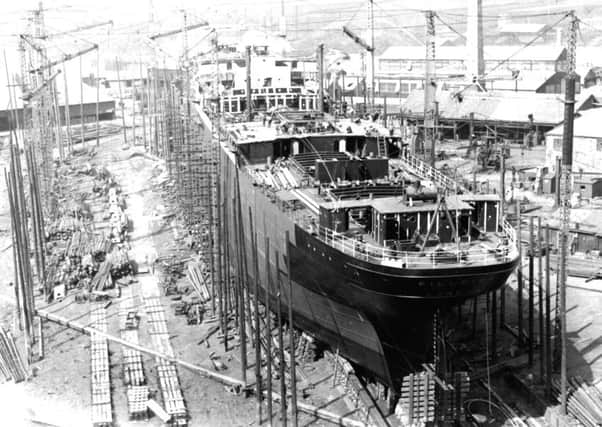Shipyard buzzer signalled '˜charge of the Light Brigade'


Geoff Henderson does, as he reveals in the last of his look-back at his time at John Readhead & Sons Ltd.
“A feature of shipyard life at this time was the yard buzzer, which signalled starting and finishing times for the workers,” explains Geoff, in the booklet The Streets of South Shields Volume 5, as compiled by learners with the Workers’ Educational Association.
Advertisement
Hide AdAdvertisement
Hide Ad“At the end of the day’s work, the buzzer would ‘go’ and the yard gates opened. Then the men would pour out like the charge of the Light Brigade.
“On my 16th birthday, I received the order to report to the Dock Plumbing Department.
“This was a surprise because I thought I would be doing my training in the shipyard. Nevertheless I reported to the docks and what an old-fashioned, grimy set-up it was.
“It was very antiquated and Dickensian to say the least – lots of jobs which required lighting. If none was available or possible, you had to use tallow candles.
Advertisement
Hide AdAdvertisement
Hide Ad“Parts of ships which required repair were not always cleaned, and you ended up as mucky as the place you were working in.”
Geoff describes the way of life for the workers in the docks as one of “fast or famine”.
“When ships came in for repair (in ones or twos) or even sometimes four or fives, the place would be a hive of activity.
“Then, when the work was finished, and no new vessels had come in, there was nowt to do.
Advertisement
Hide AdAdvertisement
Hide Ad“It was a way of life for craftsmen on the river, so much work at this dock and then paid off. They would then go to the next place with work and jobs to fill.
“At this time, just after the war, a lot of ships were being modernised and repaired.
“Also lots of vessels were being converted from coal to oil-burning boilers, and this entailed a great deal of work. As long as you were prepared to move around, there was work, but it was a case of ‘here today and gone tomorrow.’
“Unlike the docks, the keel was laid, the ship was built up and after about a year, it would sail away and the men would move onto the next new one on the stocks.
Advertisement
Hide AdAdvertisement
Hide Ad“The shipyard mostly had three or four new ships being built at the same time which meant continuity for all.
“When the keel was laid, it consisted of huge timber blocks being laid the length of the ship. This was to support the metal framework of the vessel.
“Gradually the framework took shape, plates riveted to frames until the hull and decks were ready for launching.
“This was a grand affair, with workers and their families and other guests invited to witness a celebrity or member of the shipowner’s family doing the honours (smashing a bottle of plonk against the hull).
Advertisement
Hide AdAdvertisement
Hide Ad“This is what eventually decided me to transfer to the shipyard which I mostly enjoyed.
“The company had made a reputation with the design and building of their engines over the years, but these were eventually phased out.
“They then installed other makes of engine (Doxford, Sulzer etc) in their ships, and were still successful.
“I completed my apprenticeship in 1959, and after a short spell on yard maintenance, was promoted to the engine works drawing office.
Advertisement
Hide AdAdvertisement
Hide Ad“This was in lieu of my success at day and evening classes, gaining my City and Guilds qualification.
“I was now a draughtsman engaged in various plans for the ship’s engine room, ie pipe layouts, and auxiliary machinery.
“This continued until 1960 when I left Readhead’s to continue a draughtsman at Baker Perkins Limited.
“They produced biscuit machinery, foundry and laundry products among other things - the opposite of my time at Readhead’s.
Advertisement
Hide AdAdvertisement
Hide Ad“However, I look back at my time there, and the many friends I made there, with every happiness. It was a great experience and a worthwhile foundation for my working life.”
* The Streets of South Shields group meets on a Wednesday, between 10am and noon, at Talbot Road Methodist Church, South Shields.
For more details about the group, contact Janet Wylie on (0191) 4554830, 07954413542 or email her on [email protected].